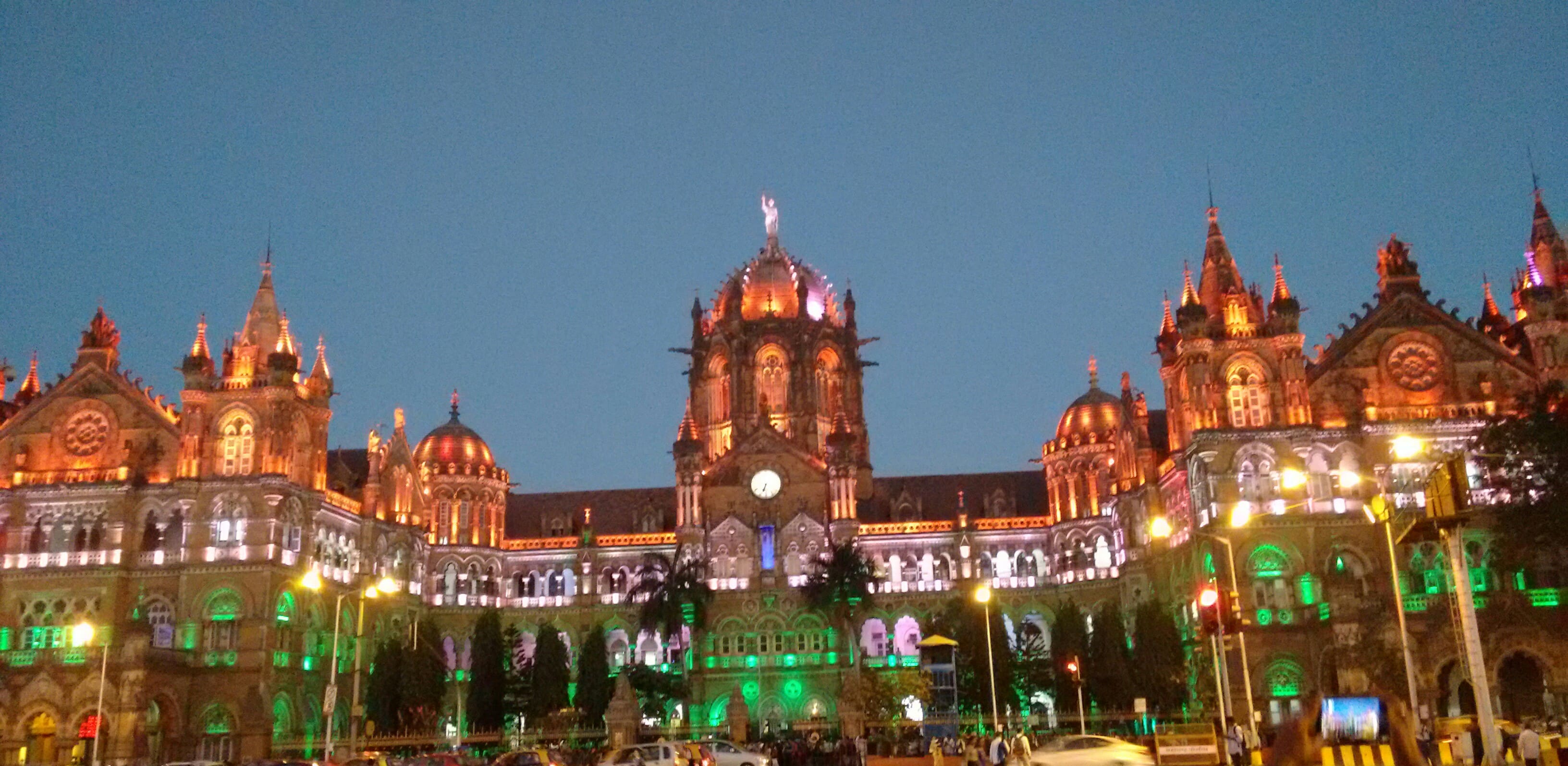Chhatrapati Shivaji Maharaj Terminus
Tell us what you need and we will respond to your query as soon as possible!

Chhatrapati Shivaji End (CST), once known, Victoria End, could be a advanced however age-old railroad station within the bustling capital city of Maharashtra - Mumbai. The sublime structure is the idealize case of the Victorian-Gothic fashion of engineering in India and was built in 1878. In reality, the railroad station, which still capacities as regular, waas a World Legacy Location beneath UNESCO in 1997. The station is continuously bustling with the sounds of the metro city and the local people. It could be a bustling railroad end, but there are a few corners of it that will make you are feeling like you've got ventured into the pages of British history.It is one of the foremost popular verifiable points of interest within the nation that's too the moment most shot landmark in India.
Chhatrapati Shivaji End was built in 1887 and it as of now capacities as the base camp of the Central Railroads. It is well-connected to all the parts of the nation because it serves as a station for long-distance as well as short-distance or commuter trains which are frequently called nearby trains. The engineering of the end is what draws most individuals to it. The night lights up the station and it looks indeed prettier.
It was here that the celebrated tune 'Jai Ho' from Slumdog Tycoon and a few sublime scenes for the Bollywood Motion picture Ra One were shot.
The Chhatrapati Shivaji Maharaj End (SCT) , at that point known as Victoria End, was built on a bit of arrive which, at that time, served as a stockroom to store merchandise that were either traded from or imported to Mumbai. It was as it were in 1853 that a railroad station was built and was alluded to as the Bori Bandar Railroad Station. The primary ever traveler prepare that worked in India was from Bori Bandar to Thane in 1853. In 1878, it was chosen that the railroad station will be revamped as Victoria End to commemorate the Queen's Brilliant Celebration and the Bori Bandar Railroad station was authoritatively known as Victoria End in 1887.
The end was outlined by a British designer with the title F.W. Stevens who made an mixed melange of Indian and British Engineering in his plans. The end was a major center of commercial exercises and was named after Ruler Victoria who ruled India amid that period. It took ten a long time to total the development of the structure and fetched over 260,000 Sterling Pounds. With this expenditure, it was known as the foremost costly structure within the city of Mumbai.
In 1996, the Serve of Railroads renamed it as Chhatrapati Shivaji Maharaj End and is coded as CSMT or CST (Chhatrapati Shivaji End). Mumbai moreover seen a fear monger assault in 2008 and CST was on the hit list. As time passed by, the Chhatrapati Shivaji End stood the tests of time for over 130 a long time and proceeds to be the life saver of Mumbai.
The center of the engineering of Victoria End is Victorian Gothic Fashion of Design. It could be a culminate outline of the wonderful amalgamation of Indian Design and the Victorian Italianate Gothic Design. One can notice the impact of Indian Engineering within the horizon, the complicatedly carved curves the ground arrange and the turrets. A few of the work on the structure was done by the Understudies of Jamsetji Jeejebhoy School of Craftsmanship. They primarily worked their enchantment on the tiles, the fancy metal railings, wood carvings and grills.
The central arch embellishes dovetail ribs and incorporates a stage that's 330 feet long that's connected to rain shed that around 1200 feet long. The insides consists of various roomy rooms that have tall ceilings. The central point of the whole structure is the tall central arch. It is octagonal and encompasses a ribbed structure with a figure of a female holding a burn in her right hand and a wheel with spokes in her cleared out. The patio is encased by side wings which are tied down by turrets on each corner. This moreover equalizations and outlines the central arch.
The outside comprises of various windows and curves. The entrance has figures of a lion, and a tiger that speaks to Britain and India individually and the complete structure is made of Sandstone, Limestone and Italian Marble. The structure houses almost 18 stages, out of which, 11 are for intercollegiate trains, and 8 are for rural trains. There are air-conditioned residences too accessible at the end that has around 20 beds for ladies and 58 beds for men.
The leading time to visit Victoria End is between October and February as the weather may be a small charming within the something else hot and muggy conditions of the city.
1. Guests can select to visit the end on Republic Day 26th of January to see the magnificent structure lit within the tricolors of the Indian Hail.
2. The swarm can be overpowering. Commuters/ guests got to ensure their possessions.
3. Guests can maintain a strategic distance from crest hours to investigate the structure and get capture a few outlines of the radiant work of engineering.
One can take a prepare from Rural or Central Railroad Stations to reach CST or Victoria End as nearly each prepare stops here.
By street, one can take NH2, NH 3, NH4, NH8, NH17 or NH222 to reach the end.
Inside Mumbai, one can profit BEST buses, auto-rickshaws or taxis to reach CST.